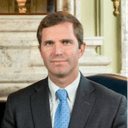
The federal government’s historically aberrant execution spree has been fraught with irregularities and “has trampled over an array of barriers, both legal and practical,” according to an investigative report by the non-profit news organization, ProPublica.
In a December 23, 2020 news story by reporter Isaac Arnsdorf, based upon an analysis of court records, ProPublica details a pattern of government secrecy, deceit, and misconduct during the course of conducting more executions in five months than were carried out in any of the last twelve presidencies. The report portrays an administration more interested in performing executions than in following the rule of law, shining a spotlight on a litany of questionable actions by officials in the Department of Justice (DOJ) and Bureau of Prisons (BOP) in purchasing execution drugs, selecting cases for execution, and expediting the executions of death-row prisoners.
Arsdorf summarizes the administration’s conduct in one stunning paragraph: “Officials gave public explanations for their choice of which prisoners should die that misstated key facts from the cases. They moved ahead with executions in the middle of the night. They left one prisoner strapped to the gurney while lawyers worked to remove a court order. They executed a second prisoner while an appeal was still pending, leaving the court to then dismiss the appeal as ‘moot’ because the man was already dead. They bought drugs from a secret pharmacy that failed a quality test. They hired private executioners and paid them in cash.”
Citing its own review of government records, as well as a January 2020 deposition by Associate Deputy Attorney General Brad Weinsheimer, ProPublica describes the process by which the government sought to obtain lethal-injection drugs. Because American pharmaceutical companies have refused to sell their products for use in executions, the BOP initially intended to buy powdered pentobarbital from a “foreign FDA-registered facility,” but later purchased it from a domestic bulk manufacturer. The BOP also considered using the opioid fentanyl for the executions, going as far as finding a supplier, but backed away from the idea when then-BOP Director Mark S. Inch warned “there may be negative publicity associated with using a drug to which so many Americans are addicted.”
The government has kept secret the supplier of its execution drugs and the identities of the laboratories that tested them, fearing that the companies would not participate in the execution process if subjected to public scrutiny. A Reuters report in July found that “[i]n some cases, even the companies involved in testing the deadly pentobarbital said they didn’t know its intended purpose. Among them is DynaLabs in downtown St. Louis, a laboratory that years ago decided against doing quality tests on execution drugs because of the controversy surrounding capital punishment.”
Federal authorities have similarly refused to disclose the identity or even the profession of private contractors who performed the executions, and it paid them in cash to reduce the paper trail surrounding their involvement. “If we didn’t pay them in cash,” a BOP lawyer said in a deposition, “they probably wouldn’t participate.”
The ProPublica report also documents a number of false claims made by the DOJ to the courts and to the public in connection with its execution efforts. DOJ claimed that the BOP had consulted multiple medical professionals in developing its execution protocol, when it actually had consulted just one professor of chemistry and pharmacology — who was neither a physician nor a care provider — and one retired anesthesiologist.
The DOJ also provided the public with inaccurate and misleading reasons for its selection of cases for execution. While the DOJ claimed that the first five prisoners scheduled for execution were “convicted of murdering, and in some cases torturing and raping, the most vulnerable in our society — children and the elderly,” in fact Daniel Lee refused to kill a child. Undisputed evidence showed that Lee’s more culpable co-defendant, whom the trial prosecutor and trial judge described as the “ringleader,” had killed an 8‑year-old girl after Lee refused to kill the child. In announcing the executions, Attorney General Bill Barr asserted that the government was doing so because “we owe it to the victims and their families.” However, the DOJ had known for years that the family of the victims strenuously opposed Lee’s execution and ignored their request that he be granted clemency. Indeed, according to Weinsheimer’s deposition, the DOJ did not consult any victims’ families before deciding which executions to pursue.
Despite concerns from BOP officials about the rushed pace of executions — the first three were scheduled in a five-day period — federal authorities never provided any explanation for their execution timeline. The compressed execution schedule contributed to the chaotic legal proceedings that took place in the days and hours leading up to the restart of federal executions in July 2020. The ProPublica report explains how the conservative majority on the U.S. Supreme Court handed down middle-of-the-night rulings that allowed executions to proceed without resolution of important legal issues.
BOP and DOJ officials rushed to immediately execute Lee, issuing a notice of same-day execution after Lee’s execution warrant expired at midnight without serving that notice upon Lee’s counsel. Executioners left Lee strapped to a gurney for four hours while DOJ attorneys worked to lift one remaining legal obstacle to his execution. Wesley Purkey’s execution the next day had similar irregularities: the Supreme Court lifted a stay of execution around 2 a.m., two hours after the execution warrant had expired, and the DOJ notified Purkey’s lawyers of its intent to immediately proceed with the execution, even as they sought an emergency stay on the grounds that Purkey’s Alzheimer’s and schizophrenia rendered him incapable of understanding his sentence. Purkey was executed with an appeal still pending, leaving the federal appeals court to dismiss his case as moot because Purkey was already dead.
The DOJ provided no explanation for it selected the cases it scheduled for executions carried out in November and December. One prisoner, Brandon Bernard, was just 18 at the time of the crime, and was known not to have killed the victims. He was the youngest offender to be executed in nearly sixty years. His case garnered significant public attention and calls for clemency from the prosecutor and five jurors who convicted him. Another, Alfred Bourgeois, presented evidence of intellectual disability that had been rejected by a Texas federal district court using criteria for evaluating his condition that had no clinical basis and were later declared unconstitutional. Even after another district court ruled that Bourgeois’ claim would likely prove his ineligibility for execution if evaluated under accepted medical criteria, federal prosecutors successfully persuaded appellate courts to let the execution go forward.
After the ProPublica report was published, yet another federal court found that federal authorities had also deliberately disregarded COVID-19 health and safety guidance, likely contributing to an explosion of coronavirus infections at the Terre Haute Correctional Complex where the executions took place. More than a dozen people involved in the federal execution process have contracted COVID-19, and the outbreak at the federal prison also infected Corey Johnson and Dustin Higgs, who are scheduled for execution the week of January 11, 2021. In a lawsuit filed by other prisoners in the Terre Haute facility, a federal judge found that BOP officials had “deliberately chosen not to implement CDC guidance regarding contact tracing and testing.”
Isaac Arnsdorf, Inside Trump and Barr’s Last-Minute Killing Spree, Pro Publica, December 23, 2020; Jonathan Allen, Special Report: How the Trump administration secured a secret supply of execution drugs, Reuters, July 10, 2020.



